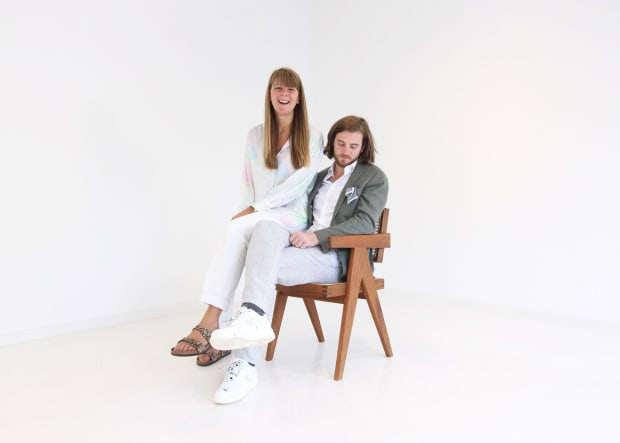-

Photo by Elena Pavlyukova
-
Creating Bridges: The Nomadic Art Gallery Today
Having returned to Europe in 2021, Arthur and Gie proceeded to the second part of The Nomadic Art Gallery's New Zealand chapter - the first of, what they had now understood, many cyclical focuses onto rarely discussed art scenes across the world.
While the first part brought forth the transitional nature of the project - both geographically and temporally - the second part elicits a fixed, physical location, where the duo presents a curatorial agenda aimed at introducing and promoting the New Zealand art scene among a broader, European audience. Taking place in The Nomadic Art Gallery's very first space in Leuven, Belgium, and second space in the heart of Ghent the on-site exhibitions initiate a dialogue between New Zealand artists. Running in parallel, the online platform, set on The Nomadic Art Gallery's website, expands on the all-encompassing nature of the digital world by focusing solely on the New Zealand art scene and its ability to reach and connect with a broader international audience - one eager to step in its turn into New Zealand's flourishing creative scenes.
-

A temporary snapshot onto a specific art scene at a given moment in time, The Nomadic Art Gallery today acts as a bridge between continents, a platform for New Zealand artists, in this first iteration, to share broadly the poorly known discourses that feed their creation – fragmented as they may be, all reclaiming their voice and identity on an international scale. At the border between the public and the private, at once art project and gallery space, connecting a too often disconnected art world and its market, it is nourished by the collaborative ties that characterize both Arthur and Gie’s work together, and their longstanding bond with the artistic community they cultivated and to which they remain committed today.
Ultimately, through its boldly independent, non-traditional approach, The Nomadic Art Gallery sets forth the potential for new gallery models to emerge – each unique, reflecting art’s inherently flexible, dynamic and diverse nature – and its ability to endlessly manifest itself in various formats, in various spaces, to various audiences.
-

-





